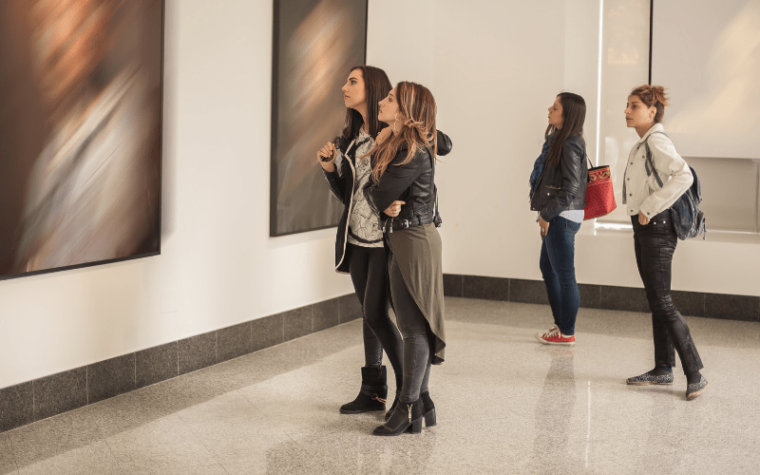
I love art museums. I love being surrounded by the old masters and the contemporary ones. The beauty and creativity encourage and energize me. When our local museum was looking to add to their pool of docents, I jumped at the chance. It’s been a great way to volunteer in the community and it ensures that I’m in the museum at least a couple of times each month, enjoying much needed moments of peace and reflection.
I do not have an art history background. We were trained for a year before becoming docents, but that’s where my experience and education ends. I realized very quickly that I would not be able to know everything about all of the incredible pieces in our museum. I love learning about each piece, but the more I learn the more I realize that I have so much more to learn. During my earliest tours, I talked about dates, mediums, and contemporaries of the artist in question. I shared backstories and interesting tidbits of history attached to each sculpture or painting. While a few groups enjoyed the long explanations, most of the reactions involved disinterested eye rolls and an eagerness to finish the tour.
Things changed for me when I realized that understanding and appreciating the selected pieces on my tours was worthless unless I understood and appreciated the people on the tour. Rather than explaining all of the details of each object, I began to ask them what they saw when they looked at a chosen piece. I asked them how they felt about it, and what questions they might have. I also shared what I enjoyed about the work. I shared some of what I knew about each work but didn’t feel pressured to share everything. I worked to connect with our guests as much as I worked to connect with our art. It was a simple change in approach, but the tours came alive. The participants felt valued and were more eager to enjoy what they saw.
As a new pastor, I have been tempted to make many of the same mistakes that I made as a first-time docent. I was eager to share knowledge about God and the Christian life. I felt pressured to know more and more so I could share more and more. I’ve come to see that connecting with our people is just as important as educating them. Great works of art challenge people, they can trouble you or bring you joy. A lot depends on the eyes of the beholder and where they are in life at that moment. I’ve found God to be similar. He brings joy but can also challenge us or trouble our thoughts making us rethink our assumptions about life. So now I ask questions, not to quiz or test people, but to understand them. I listen. My first priority now isn’t a more knowledgeable congregation, but an engaged one. I’ve found that it’s no good answering questions that people don’t have, whether in a museum or in a church.
I don’t feel pressured to have all of the answers anymore. I try to have good questions. I try to have a genuine interest in each person in our church. I hope that they see the beauty I see when I look at God. I hope that they allow Him to challenge their thinking one day and encourage their hearts the next. I work to get out of the way as much as I can so that they can see God for themselves. After all, seeing Van Gogh’s Starry Night in person is more transformative than a lecture about the artist’s early life. Likewise, experiencing God for ourselves will transform us more than 1000 books of theology.

